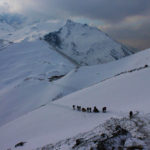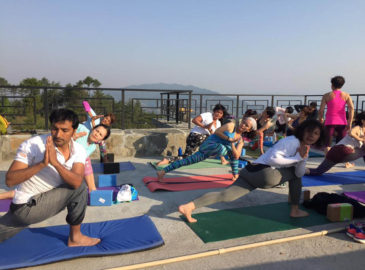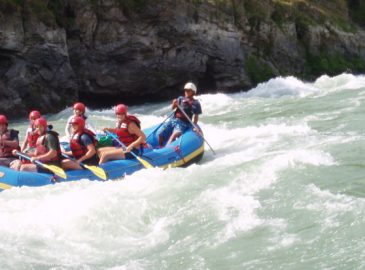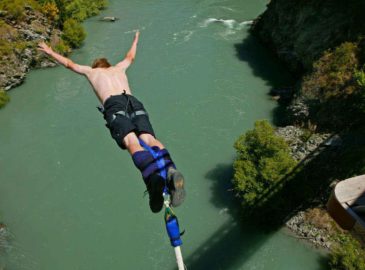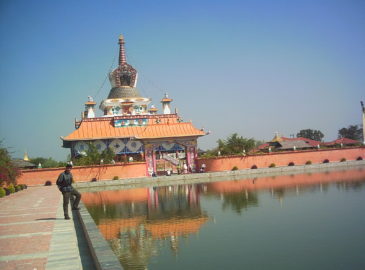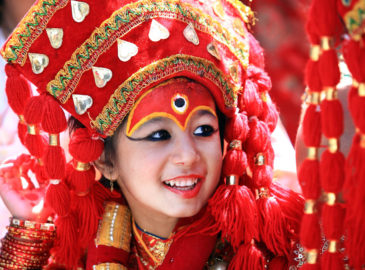Everest Three Pass Trek
Planning:
With three high passes to cross the main considerations are the added height, exposure to bitter winds and carrying extra warm gear. Conditions are always unpredictable with changing weather patterns in the Himalayas, which traditionally had settled periods. It is sometimes feasible for trekkers to dross these high passes equipped only with normal trekker's gear but to do so would require a dose of extremely good luck with the weather. The only safe plan is to be properly equipped with adequate gear from the start. Taking crampons, ropes and mountaineering equipment is the only sensible option. The main consideration for this trek is to allow plenty of time for acclimatisation. Most do the trek from Dingboche via Kongma La to Lobuche and the Cho La to Gokyo, with the Renjo La last. This is because the altitude gains from Namche, Thame, and Lungden to the Renjo La are excessive at the beginning of the trek.21 Days
A (Easy)
5420 m
Oct - May
Lodge Trek
Tour Plan
Additional Information
The Trail Conditions
Straight, Up hill, Down hill, Jig Jag with small rocky, pebbles, muddy, some where dusty, man made stone steps, through the moss covered forests, Rocky glacier or If snows, snowy path crossing suspensions metal bridges and wooden bridges over the rivers
High Altitude Sickness:
Often times treks that ascends beyond 3500 m would require more days for acclimatization to ensure that trekkers do not suffer from high altitude sickness. The thinner air affects you in many ways and if you go high too fast there is a high chance to get effect.
Insurances of Guide and Porters
We do our Trekking insurance for the duration of 10 or 15 years from reputed insurance company in Kathmandu, Nepal which covers our insurance for the duration of our trek as well. On the other hand we (Hike Nepal) are member of TAAN (Trekking Agent Association of Nepal) TAAN takes fully responsible for the staffs of its members while we are on the trek. You are highly recommended to be insured for this trek from your country.
We, Nepalese eat a meal of Dhal Bhaat (rice with lentil soup, curry and pickles) twice daily. The ingredients vary according to local and seasonal availability, but vegetarian options are the norm. Another cheap popular local dish is the ubiquitous instant noodle soup, enhanced by local vegetables, or meat or egg, depending on availability.. Eating Nepali-style will provide you with a truly local experience, guarantees fresh ingredients everywhere, and rules out disappointments.
Also, in all lodges tourists will be served their meals in the lodge dining room before the Nepali staff gets their meals in the kitchen or another place where guides and porters relax. And staff members’ quarters are separate from the tourist rooms. This seemingly two-class system may be a difficult concept for some tourists, but it can also be seen as “time off” for the staff members. Nepalese eat mostly with their hands, a custom that is considered offensive by some tourists another reason why the staff members may actually prefer to eat separately.
Medication
- Bandage for sprains
- Plasters/Band-aids
- Iodine or water filter (optional)
- Moleskin/Second skin – for blisters
- Antiseptic ointment for cuts
- Anti-bacterial throat lozenges (with antiseptic)
- Aspirin/paracetamol – general painkiller
- Oral dehydration salts
- Broad-spectrum antibiotic (norfloxacin or ciprofloxin)
- Anti-diarrhea medication (antibiotic)
- Diarrhea stopper (Imodium – optional)
- Antibiotic for Giardia or similar microbe or bacteria
- Diamox (altitude sickness – can be bought in Kathmandu)
Clothing / Equipment List
Kindly bring the following list of clothing / equipment for our trek to Everest 3 pass Trek
-Pair trekking boots and waterproofing agent
-Pair lightweight trekking sandals
-Pairs thin walking socks
-Pairs lightweight wind – water proof pants
-T-shirts
-Fleece Jacket
-Set lightweight thermals
-North Face down Jacket (Preferably)
-Small thin towel (sports towel best)
-Soap
-Shampoo
-Sunscreen
-Extra lightweight shirt for daypacks – for stops along the way
-Hat
-Cotton or silk bag liner – optional
-Neck warmer
-Pairs ‘thinners’ gloves
-Rucksack
-Pack tissues
-Pair sunglasses
-Water filter / Iodine (you could buy boiled water in hotels/ lodges which is safe to drink.
-Camera and films
-Head torch and spare batteries
-Sleeping bag (rated -15(above) D C during our trek )
Above things are required for Everest 3 pass trek. However if you do not have clothing you can either buy or rent in Nepal. In this case we have equipment cheaper than your country.
Recent Post
-
Langtang Valley Trekking
Duration: 08 days
Popular Trekking
-
Everest Panorama Trekking
Duration: 8 days
-
Gokyo Lake Trekking
Duration: 12 days
-
Everest Base Camp Trekking
Duration: 14 days
-
Jomsom Muktinath Trekking
Duration: 14 days
Extend My Holidays
If you like to extend your holidays in Nepal with your short time to experience the high mountains and Nepalese culture you can choose these short and easy extensions trips. Also for those who are inexperience in walking up and down on the mountain the following options are the best to choose. Click on the link below to get its information.



